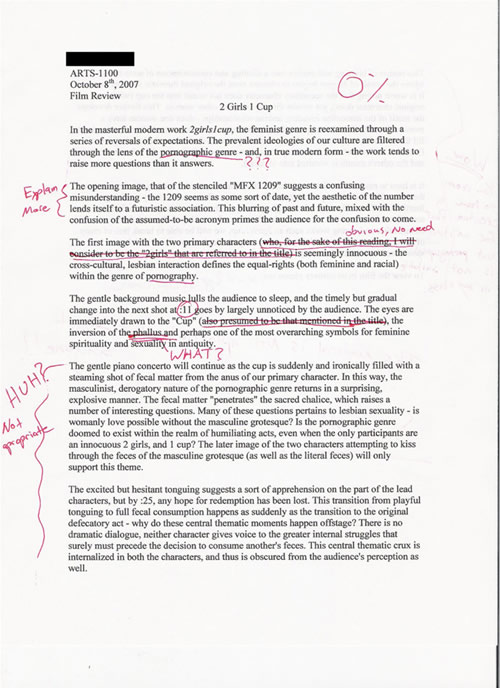Written by classic illiterature
Disclaimer: I like to make sweeping judgments about large groups of people based on very little information. Enjoy!
10. The Wave
If you’re from the beach, want to be from the beach, or went to a popular poster site and picked the best seller from the ‘fine arts’ category, you probably have this one hanging in your bed room.
Katsushika Hokusai’s “The Great Wave at Kanagawa” is considered to be a work of great aesthetic and spiritual significance. Apparently it also makes surfers appear sensitive. “The wave is like the most beautiful part of nature,” they will say. Well don’t forget about the bro-dodendra, bro.
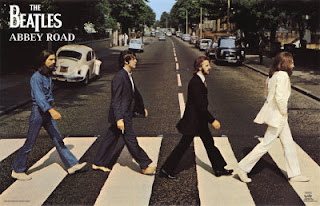
9. The Beatles Abby Road
Classic album, classic picture. But guess what? 90% of the people under 35, who have this poster, don’t listen to the Beatles. However, by adding this poster to your wall and talking about the significance of Paul not wearing shoes, people will actually think that you have good taste in music. Just don’t forget to hide the Gucci Mane and Ying Yang Twins cds you’ve been listening to all week.
“Say hello to my little friend. His name is played out!” Everyone has seen the movie, everyone has seen the poster, and thanks to MTV cribs, everyone is over it.
If you have this poster hanging on your wall, you probably listen to a lot of rap music, sell small amounts of marijuana, and think you are a total badass. If that rings a bell, here is a bit of advice. Take down the poster, buy Abby Road, stop selling pot, and read a book.
7. Girls
There is nothing wrong with this poster. In fact, it was chosen because…well…it’s pretty hot. It does, however, represent one of the most clich? poster trends of all time. Tasteless pictures of hot chicks wearing next to nothing — or in this case, nothing at all.
Do you have one of these hanging above your toilette? If so, you were probably thinking: “Man, this is cool. No one has done this.” You were wrong. You actually saw it in a bar last week and were to drunk to remember. And you have now managed lump yourself in with about 40 million other ‘dudes’ between the ages of 15 and 30. Congrats! How exciting.
6. Mixology
This poster — an absolute staple in large universities across the U.S. — says one thing and one thing only. ‘I’m a drunk. That’s right. I want everyone who walks into my house to know that I drink way too much alcohol and I’m so proud of that, I’m willing to put a notice right here on the fuckin’ wall.’
If you are ever at a house with one of these, you may want to inquire as to whether or not your host has any interesting drinks he can make. He doesn’t. There is a case of Bud Light in the fridge, but you can only have one because his roommates paid for it.
5. Dali
The Metamorphosis of Narcissus. It is a beautiful painting. No doubt about it. And a lot more people would probably have it in their homes if it wasn’t for all those pretentious hippies who have gone and spoiled it for the rest of us.
I can’t even tell you how many times I have heard someone say that their favorite artist is Dali and then be unable to name their second favorite. Too often, Salvador is the only thing owners of this poster know about art. But they want you to think otherwise. Damn hippies.
4. The inspirational poster
This one makes the list because it’s seen in every counselor/student adviser’s office in the nation. There are a whole serious of them that contain innate dribblings about perseverance, spirituality, and other important life lessons. I’m sorry, if it doesn’t have Michael Jordon on it, I’m just not that inspired.
These are also popular with the hipster crowd, who will sit around reveling in the irony. Oh the irony! (On a side note: If you are a hipster please click here)
3. Muhammad Ali
This poster lets everyone know that its owner is tough. He likes real men, who do real manly things. It also lets you know that he saw this poster at his buddies house and copied the idea since he was too drunk to think of anything original.
This is so clich?, words are not even needed.
I smoke marijuana. Did you know that? Well, if you didn’t, just take a look at this giant Bob Marley poster on my wall and you will know that I do.
The problem with this poster, is that it’s not about Bob Marley. It is about joe college guy or jane college girl’s affinity for getting way to high every tuesday afternoon. Read the books boys and girls. Leave the reggae alone. It’s not for you.

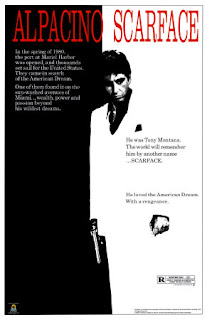
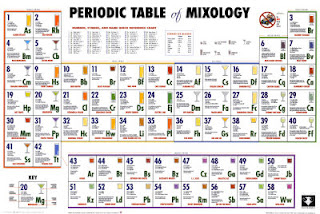

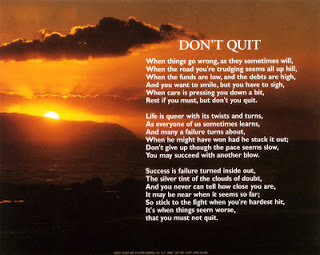
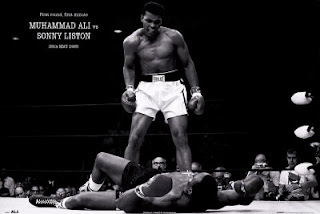
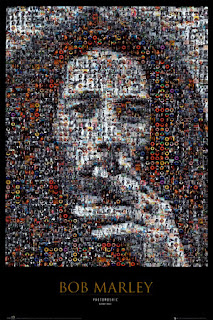




 1. Charlie Kerfeld, Houston Astros
1. Charlie Kerfeld, Houston Astros
 Former A?s owner Charlie Finley never thought of a gimmick he wouldn?t try, including a mechanical rabbit that delivered fresh balls to the umpire and hiring a 13-year-old MC Hammer as his ?Executive V.P.? In 1972, Finley offered his players cash for growing a mustache by Father?s Day, thereby giving birth to reliever Fingers? trademark handlebar ?stache. The A?s went on to win the World Series that season, and Fingers? contract for 1973 contained a $300 bonus for growing the mustache as well as $100 for the purchase of mustache wax.
Former A?s owner Charlie Finley never thought of a gimmick he wouldn?t try, including a mechanical rabbit that delivered fresh balls to the umpire and hiring a 13-year-old MC Hammer as his ?Executive V.P.? In 1972, Finley offered his players cash for growing a mustache by Father?s Day, thereby giving birth to reliever Fingers? trademark handlebar ?stache. The A?s went on to win the World Series that season, and Fingers? contract for 1973 contained a $300 bonus for growing the mustache as well as $100 for the purchase of mustache wax. Before Oswalt made a start in the 2005 National League Championship Series, Astros owner Drayton McLane promised to make the ace?s dreams come true if he won, specifically his life goal of bulldozer ownership. After Oswalt dominated the Cardinals to send Houston to its first-ever World Series, McLane came through with a Caterpillar D6N XL. Since Major League Baseball requires high-dollar gifts be disclosed, Oswalt signed an addendum to his contract, a ?bulldozer clause,? authorizing the club to give him his new toy.
Before Oswalt made a start in the 2005 National League Championship Series, Astros owner Drayton McLane promised to make the ace?s dreams come true if he won, specifically his life goal of bulldozer ownership. After Oswalt dominated the Cardinals to send Houston to its first-ever World Series, McLane came through with a Caterpillar D6N XL. Since Major League Baseball requires high-dollar gifts be disclosed, Oswalt signed an addendum to his contract, a ?bulldozer clause,? authorizing the club to give him his new toy. Arizona inked the slugging third baseman signed for four years and $45 million in December 2004. As part of the deal, Glaus receives $250,000 annually for ?personal business expenses,? namely the cost of his wife Ann?s equestrian training and equipment. Although Glaus bashed 37 homers for the Snakes in 2005, he also tied for the major-league lead in errors by a third baseman with 24, and despite Mrs. Glaus? surely improving performance in the steeplechase, Glaus had to hoof it to Toronto when he was traded barely a year after signing.
Arizona inked the slugging third baseman signed for four years and $45 million in December 2004. As part of the deal, Glaus receives $250,000 annually for ?personal business expenses,? namely the cost of his wife Ann?s equestrian training and equipment. Although Glaus bashed 37 homers for the Snakes in 2005, he also tied for the major-league lead in errors by a third baseman with 24, and despite Mrs. Glaus? surely improving performance in the steeplechase, Glaus had to hoof it to Toronto when he was traded barely a year after signing. 5. Randy Johnson, Arizona Diamondbacks
5. Randy Johnson, Arizona Diamondbacks Beltran?s mammoth seven-year, $119 million deal from January 2005 showed that he had all of baseball?s five tools but lacked a conditioned ocular enhancer, a gadget that throws numbered, colored tennis balls over 150 mph to help players pick up the speed of a pitched ball. So he got a contract clause requiring the Mets lease the machine and retain an operator for it. However, Beltran only hit .266 in his first year with the club, so maybe a used copy of Tony Gwynn?s tome The Art of Hitting would have been more cost-effective.
Beltran?s mammoth seven-year, $119 million deal from January 2005 showed that he had all of baseball?s five tools but lacked a conditioned ocular enhancer, a gadget that throws numbered, colored tennis balls over 150 mph to help players pick up the speed of a pitched ball. So he got a contract clause requiring the Mets lease the machine and retain an operator for it. However, Beltran only hit .266 in his first year with the club, so maybe a used copy of Tony Gwynn?s tome The Art of Hitting would have been more cost-effective. When the Houston Astros (sound familiar?) re-signed Brad Lidge in January 2007, their former closer got an incentive clause promising $25,000 for winning a Silver Slugger, given annually to the top hitter at each position. Lidge probably didn?t consider this easy money; as a relief pitcher, he had only been to the plate seven times in his five-season career and hadn?t seen an at-bat since 2004. Despite an erratic season on the mound, Lidge was the model of consistency at the plate in 2007, mostly because he never had an at-bat. Houston finished 13th in the National League in runs scored, though, so maybe letting Lidge take some hacks would have been worth a try.
When the Houston Astros (sound familiar?) re-signed Brad Lidge in January 2007, their former closer got an incentive clause promising $25,000 for winning a Silver Slugger, given annually to the top hitter at each position. Lidge probably didn?t consider this easy money; as a relief pitcher, he had only been to the plate seven times in his five-season career and hadn?t seen an at-bat since 2004. Despite an erratic season on the mound, Lidge was the model of consistency at the plate in 2007, mostly because he never had an at-bat. Houston finished 13th in the National League in runs scored, though, so maybe letting Lidge take some hacks would have been worth a try. Lots of players have free-plane-ticket perks written into their contracts, but some feel that air travel really lacks that fun we?re-going-to-the-prom feeling that you can only get from a long limo ride. When flamethrower A.J. Burnett signed with Toronto as a free agent in December 2005, he required that his wife receive eight round-trip limo rides from his home in Maryland to Toronto each season. That?s around nine hours in a limo each way, which is enough time to move the little divider between you and the driver up and down roughly 3,500 times.
Lots of players have free-plane-ticket perks written into their contracts, but some feel that air travel really lacks that fun we?re-going-to-the-prom feeling that you can only get from a long limo ride. When flamethrower A.J. Burnett signed with Toronto as a free agent in December 2005, he required that his wife receive eight round-trip limo rides from his home in Maryland to Toronto each season. That?s around nine hours in a limo each way, which is enough time to move the little divider between you and the driver up and down roughly 3,500 times. 9. Daisuke Matsuzaka, Boston Red Sox ? Dice-K?s deal with the Red Sox includes a plethora of strange or excessive clauses including housing allowances and a personal masseuse, but the oddest is that he?s contractually guaranteed the jersey number 18.
9. Daisuke Matsuzaka, Boston Red Sox ? Dice-K?s deal with the Red Sox includes a plethora of strange or excessive clauses including housing allowances and a personal masseuse, but the oddest is that he?s contractually guaranteed the jersey number 18.

 10. Dattoos: Interactive Tattoos
10. Dattoos: Interactive Tattoos 9. Astrium Spaceplane
9. Astrium Spaceplane 8. Custom Kicks
8. Custom Kicks 7. Nikon 360
7. Nikon 360 6. Honda Cub Motocycle
6. Honda Cub Motocycle 5. Pills To Go
5. Pills To Go 4. WPA Wearable Power Suit
4. WPA Wearable Power Suit 3. B-Membrain Computer
3. B-Membrain Computer 2. Credit Card of the Future
2. Credit Card of the Future 1. Timeflex Stick-On Watch
1. Timeflex Stick-On Watch